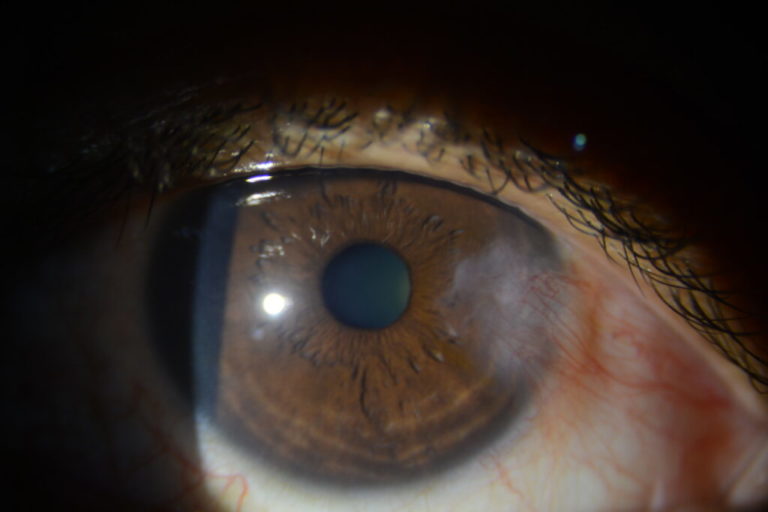Pterygium
- Services
- Pterygium
Pterygium
A pterygium is a growth of the conjunctiva or mucous membrane that covers the white part of your eye over the cornea. The cornea is the clear front covering of the eye. A pterygium usually doesn’t cause problems or require treatment, but it can be removed if it interferes with your vision.
What causes it?
The exact cause of pterygium isn’t known. One explanation is that too much exposure to ultraviolet (UV) light can lead to these growths. It occurs more often in people who live in warm climates and spend a lot of time outdoors in sunny or windy environments. People whose eyes are exposed to certain elements on a regular basis have a higher risk of developing this condition.
These elements include:
- pollen
- sand
- smoke
- wind
What are the symptoms?
A pterygium doesn’t always cause symptoms. When it does, the symptoms are usually mild. Common symptoms include Redness, blurred vision and eye irritation. You ight burning sensation or itchiness. If a pterygium grows large enough to cover your cornea, it can interfere with your vision. Thick or larger pterygium can also cause you to feel like you have a foreign object in your eye.
How serious is it?
A pterygium can lead to severe scarring on your cornea, but this is rare. Scarring on the cornea needs to be treated because it can cause vision loss. For minor cases, treatment usually involves eye drops or ointment to treat inflammation. In the more serious cases, treatment can involve surgical removal of the pterygium.
How is it diagnosed?
Diagnosing a pterygium is straightforward. Your eye doctor may diagnose this condition based on a physical examination using a slit lamp allows your doctor to see your eye with the help of magnification and bright lighting. If your doctor needs to do additional tests, they may include:
- Visual acuity This test involves reading letters on an eye chart.
- Corneal topography This medical mapping technique is used to measure curvature changes in your cornea.
How is it treated?
A pterygium usually doesn’t require any treatment unless it’s blocking your vision or causing severe discomfort. Your eye doctor might want to check your eyes occasionally to see if the growth is causing vision problems.
medications
A pterygium usually doesn’t require any treatment unless it’s blocking your vision or causing severe discomfort. Your eye doctor might want to check your eyes occasionally to see if the growth is causing vision problems.
surgery
Your doctor may recommend surgery to remove the pterygium if eye drops or ointments don’t provide relief. Surgery is also done when a pterygium causes a loss of vision or a condition called astigmatism , which can result in blurry vision. one can also discuss surgical procedures with your doctor if you want the pterygium removed for cosmetic reasons.
Surgery usually involves removing the pterygium and placing a conjutival graft in that area ,called PTERYGIUM EXCISION WITH CONJUNCTIVAL AUTO GRAFT
videos
Make Appointment
- 10.00 AM - 08:00 PM , Monday - Friday
- 9.30 AM - 05:00 PM , Saturday
- Holiday , Sunday
- https://bit.ly/3rkHIwO
Copyright © 2022. All rights reserved by PradnyaNethralaya

